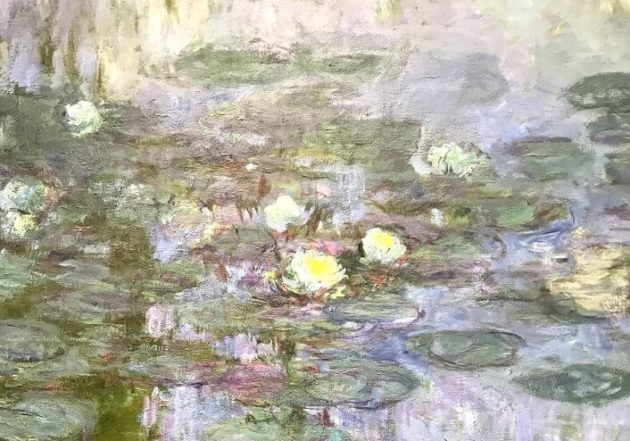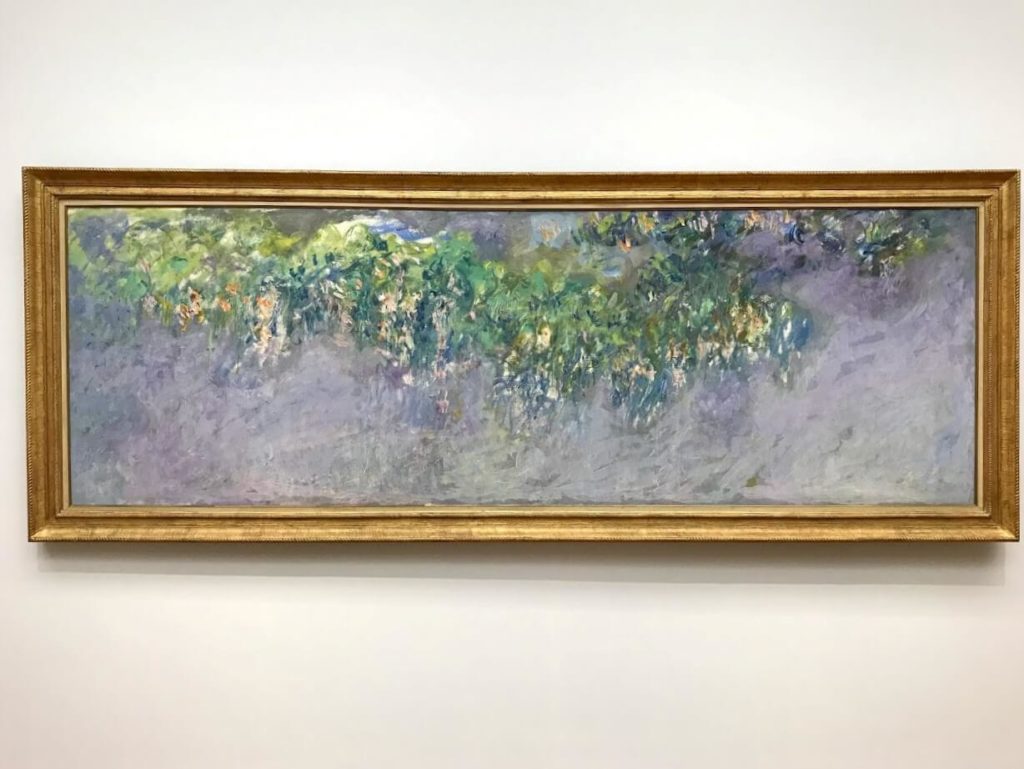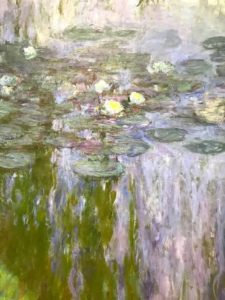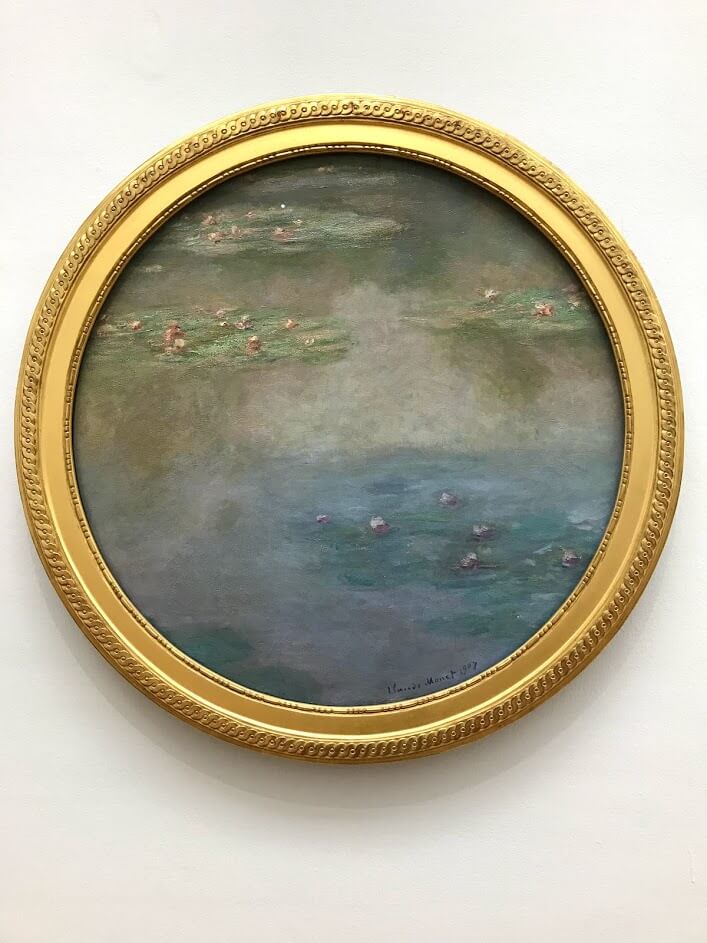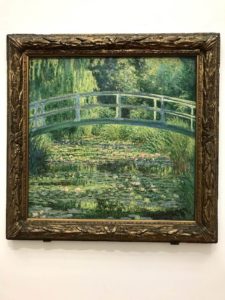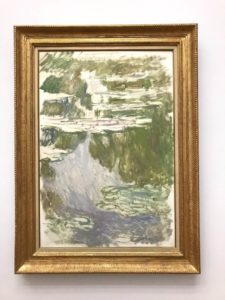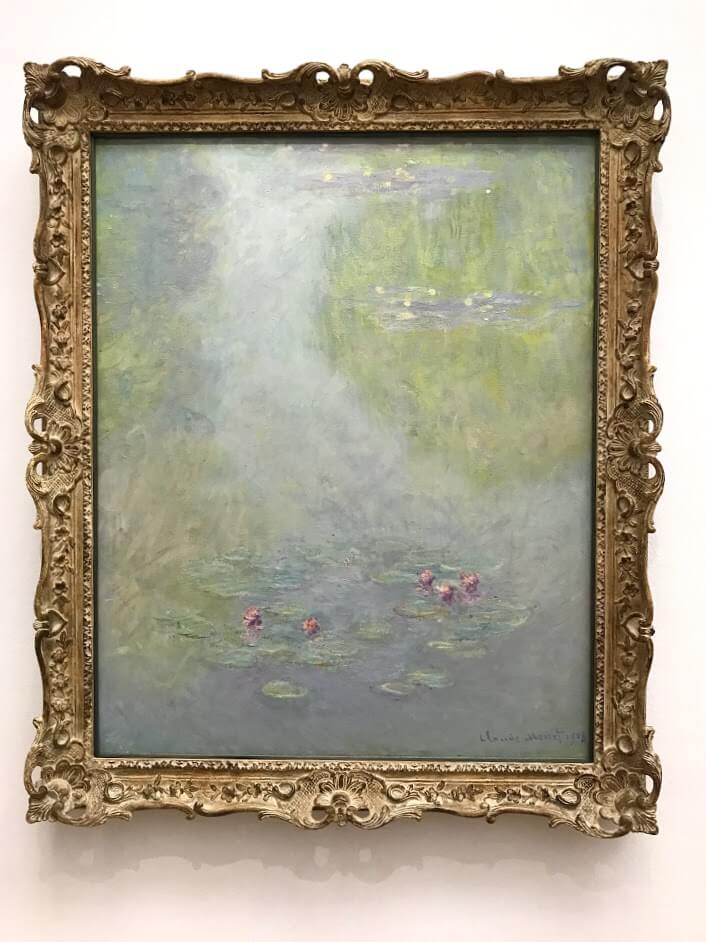I hope you’re enjoying our virtual museum visits so far. I’m having a lot of fun in creating them. And occupying myself with art, instead of strolling through my Facebook feed and stressing around the current situation.
If you’ve just joined, you can see our previous visits to the collection of Johannes Vermeer’s paintings at the Rijksmuseum and Van Gogh’s Sunflowers on the links here. Today, I wanted to show you some of The Water Lilies painted by Claude Monet.
Claude Monet & The Water Lilies
Claude Monet is a French painter born in 1840. He started drawing while still in school, first by creating some caricatures of his teachers. Although his father wanted him to get involved in the family business, he was always more interested in art. He decided to pursue that and went to Paris to learn how to paint. There, he met a group of young painters with whom he started to develop a new, and one of the first modern art styles – the Impressionism.
Although at the beginning he was struggling to exhibit or sell any of his work, after some time he started to earn a decent income from his art. He also travelled quite a lot, among the others to England, the Netherlands and Norway. He painted numerous paintings, among which a series of the Water Lilies are probably the most famous.
⤷ Read more about Impressionists in Paris in my blog post here
Where to see Claude Monet’s Water Lilies?
Claude Monet’s Water Lilies is a series of around 250 paintings showing his flower garden at Giverny in France. Today those paintings could be seen in museums all around the world.
Museé Marmottan Monet in Paris
The museum with the biggest collection of his paintings is Museé Marmottan Monet in Paris. However, it’s also a museum that’s often overlooked by visitors to the French capital. But, it’s a fantastic place to visit for anyone in love with Claude Monet’s work. You can see a part of their Monet’s collection on a link here.
Museé de l’Orangerie in Paris
Probably the most amazing place to see some of Claude Monet’s The Water Lilies is in the two oval rooms of Museé de l’Orangerie in Paris. Sitting in the middle of the room, surrounded by the huge canvases showing the water lilies is definitely one of the most amazing museum experiences I have ever had.
TIP: You can virtually visit the museum here and see how the oval rooms with Claude Monet’s The Water Lilies look like.
At the beginning of 2020, Kunstmuseum Den Haag had a special exhibition dedicated to Claude Monet and his The Water Lilies. Photos in this post are from that exhibition. Although the majority of the paintings were on loan from Museé Marmottan Monet in Paris. You can see some of the paintings and read more about the exhibition here.
You can also see all of his the Water Lilies with some basic info about them on a link here.
Claude Monet & his the Water Lilies
Monet moved with his family to a small town Giverny in 1883. And he spent the next forty years living and painting at his flower garden there. He mostly focused on painting the water lilies between 1909 and 1926.
After buying a house in Giverny, Monet started to arrange his garden. He planted numerous trees and flowers there, by putting flowers of specific colours next to each other. His aim was to create colour compositions for his paintings that way.
Monet especially focused on his water-lily pond. And has even built a wooden bridge over the small lake, as it was popular in Japanese culture, he was so influenced by. He was especially inspired by their colours, changing the glow of the water and the light reflections on it.
‘It took me some time to understand my water lilies… I had planted them purely for pleasure; I put them in without thinking of painting them. A landscape doesn’t get to you in a day. And then suddenly it dawned on me how wonderful my pond was, and I reached for my palette.’
Claude Monet
Claude Monet wanted to create a series of paintings showing the water lilies, and he started to work on larger compositions during the First World War (1914 – 1918). He meant to install them at public spaces, to create a sort of a place for the meditation.
Standing in front of some of Claude Monet’s The Water Lilies is almost like a spiritual experience. He’s removing the horizon and any other signs of the real world from them (with the exception of the wooden bridge on some of the earlier examples). He lets your eyes wander freely around the painting. And is pulling you into his composition of brush strokes, textures, light and colours that way.
Monet worked on his the Water Lilies series until his death. During the last few years of his life, he was almost blind.
Claude Monet’s The Water Lilies are some of the paintings I’ll never get bored of. Each visit to Museé de l’Orangerie in Paris feels like a personal spiritual journey. And each opportunity to see more of his work fills me with joy.
Have you seen any of Claude Monet’s The Water Lilies? Do you have any questions about them? Ask them in comments, and I’ll answer them.

